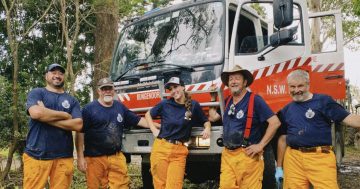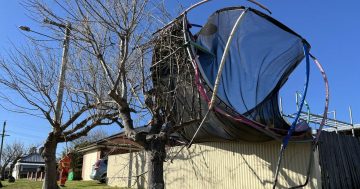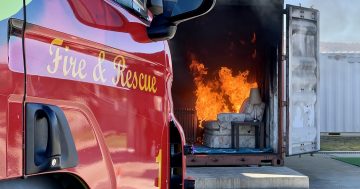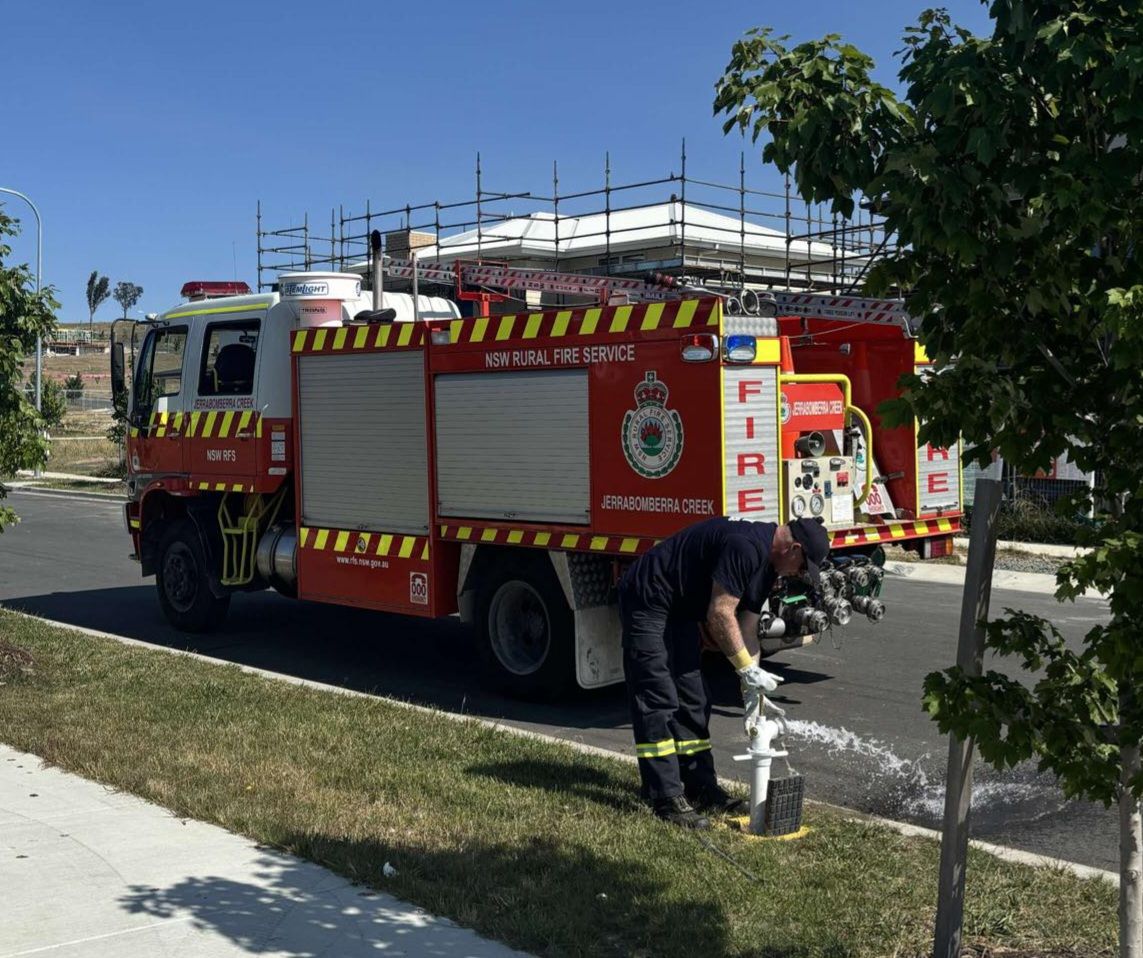
Members of the Jerrabomberra Creek Rural Fire Brigade regularly check the local fire hydrants. Photo: Jerrabomberra Creek Rural Fire Brigade.
In the unfortunate event of a bushfire or structure blaze, our life-saving fire brigades need to be able to access the fire hydrants on the street.
But as one brigade has been seeing hydrants in the region being covered, blocking access to them, it is urging the community to be aware that their local hydrants need to be clear of obstructions.
“Our big message is don’t hide your hydrant,” Jerrabomberra Creek Rural Fire Brigade’s Senior Deputy Captain Tom Gibbs said.
“We need to access these at short notice in case of bushfire or structure fire.”
The brigade recently posted on its social media account, encouraging residents to keep the local hydrants clear of debris and to make sure they are not covered in grass or parked over by cars and trailers.
Deputy Captain Gibbs said his brigade has seen hydrants covered up in all areas, such as Queanbeyan, Jerrabomberra, Googong and parts of the ACT.
He said that to access one hydrant, his team had to dig through nearly one foot of dirt in order to access it – and the nearby home’s resident didn’t even know it was there.
Other hydrants have been covered up with concrete, dust, landscaping or just parked cars and trailers.
“We found in general that a lot of people don’t realise they have hydrants in their block, as they have been accidentally covered up during the construction of their home,” Deputy Captain Gibbs said.
He said most fire brigades regularly test the hydrants across their communities.
“But as you can understand, there are a whole lot of hydrants across the community and only a certain amount of volunteers to test them,” he said.
He was asked what his message to the community would be.
“If they have a fire hydrant located within their house block, we would really appreciate it if they would keep it available to access 24 hours a day,” he said.
“That includes not putting landscaping over it, not parking over it, and not putting kids’ equipment over it.”
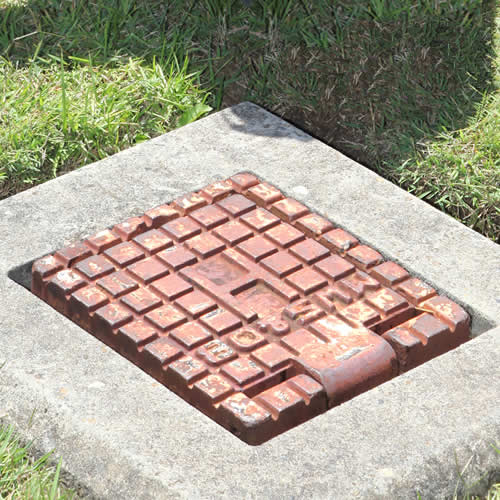
Residents are urged to keep fire hydrants like this clear from obstructions. Photo: Fire and Rescue NSW.
Fire and Rescue NSW has advice on how to find your local fire hydrants.
It says hydrants can be found a couple of feet underground on a road or pathway, have a cover called a surface fitting, and are about 50 to 100 metres apart in residential areas.
The most common surface fitting is one with the letter ‘H’, which may be yellow.
“The hydrant cover should be clearly marked, cleared of vegetation or other obstructions and not parked over at any time,” Fire and Rescue says.
“If maintenance or marking is required, report it to your local fire station, council or water authority.
“Fire services use the hydrant to provide a continuous flow of water, which is vital to firefighting operations.”
Deputy Captain Gibbs said the community had been very receptive when his brigade had spoken to members about fire safety.
“We have been really pleased with how the community has been engaging with the brigade,” he said.












